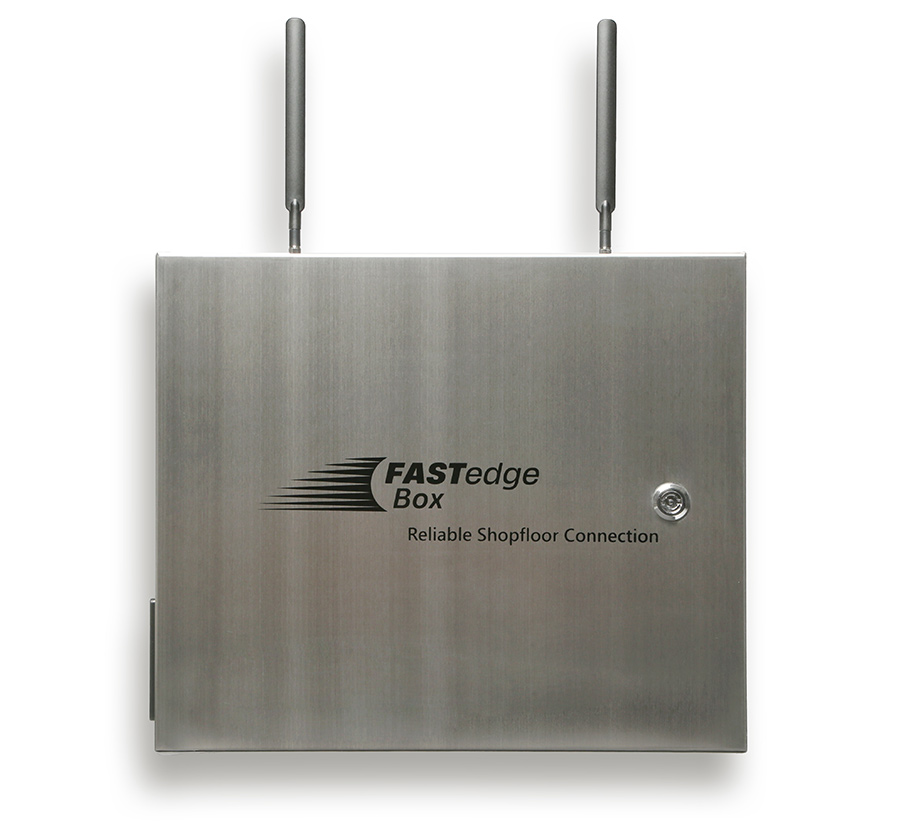Production Data Acquisition (PDA) in companies takes into account how much is produced and how quickly. Whether on paper or via terminal input in the ERP system, employees record and transfer the values manually.
Media breaks and transmission errors are a major source of errors. Employees also wonder why they have to read values from the machine and insert them elsewhere. The solution to these problems is called MDA.
Christoph Höltring, MES-Consultant at FASTEC
A PDA in combination with an MDA automates data acquisition and leads to accurate information. The MDA records the availability, performance and quality of a production plant. It records productive and downtimes as well as good and bad quantities based on the actual machine values. Even though much of the data is documented as automatically as possible, employees make additional entries, to take into account the exact reason for a machine downtime, for instance.
Companies use the Overall Equipment Effectiveness (OEE) indicator to evaluate the productivity of a plant as a whole. In doing so, they relate all data to the production orders and operations. Postings in enterprise resource planning (ERP) are the quantities actually produced and the times required for this. These are automated on the basis of the MDA and PDA as well as through an interface between the ERP system and a Manufacturing Execution System (MES) such as FASTEC 4 PRO. An MES provides a digital image of production and enables real-time monitoring of production processes.
Industry Standard OPC UA is Future-Oriented
A machine connection that transmits real-time data from the machine to the MES is necessary for the MDA. There are three different options here, with the established industry standard OPC Unified Architecture (OPC UA) being the best solution. The reason:
The machine connection via OPC UA has the decisive advantage of significantly reducing the effort required for interfaces. The data comes directly from the data source and does not have to be derived via signal technology. Bidirectional communication is also possible, e.g. to transfer default parameters to the system. When purchasing new systems, it should therefore always be ensured that the OPC UA interface is already available.
Jonas Drees, Sales Team Manager at FASTEC
OPC UA standardizes access to machines in production. This creates a manufacturer-independent data exchange. This makes this standard a particularly important building block for Industry 4.0 and the Internet of Things (IoT). The data is first made available to the MES on an OPC server, which is operated either directly in the machine control system or at a separate location. The data acquisition system works as a client and transfers the data via the UA protocol. Further detailed information can be found in our expert paper specifically on the OPC UA industry standard.
The Type of Machine Connection Depends on the Production Conditions
If our customers are unable to provide the data and interfaces themselves, we also support them as on-site technicians. This requires many years of experience in control technology. You could say that we speak the language of the machines.
Waldemar Boschmann, Automation Technician at FASTEC
Another variant of the machine connection involves direct communication between the MES and the system’s programmable logic controller (PLC). This requires the expertise of the MES provider to provide a driver for binding the controller. While this is usually available for common controllers, companies should plan for complex programming for less well-known variants. In addition, cooperation with the machine manufacturer or in-house automation specialist is often necessary. The MES either receives full access to the PLC project or the necessary variables are provided in a separate data block. This binding option provides exact data directly from the source and can also record process data (temperatures, pressures, etc.).
A Bell Wire is the Pragmatic Solution
Older machines that do not have an interface for data output often involve expensive retrofitting. Sometimes it is not even possible. Some of them are not connected to the production network and therefore cannot be reached. In this case, it makes sense to use sensor technology or digital signals.
Waldemar Boschmann, Automation Technician at bei FASTEC
With this machine connection option, an electrician can connect a production signal from the machine’s control cabinet to an I/O module, which in turn communicates with the MES. Even a simple clock pulse signal is sufficient to calculate exact machine data.
Step Away From Gut Feeling, Towards a Data Basis
If companies want to record data automatically in their production, there is no way around an MDA. The prerequisite for this is a real-time machine connection, for which there are three different options depending on the system and requirements. The industry standard OPC UA is considered to be the best solution for companies because it enables manufacturer-independent data exchange. Option two also offers all data, but is more complex in practice. For old machines, companies can choose a pragmatic binding via I/O module.








